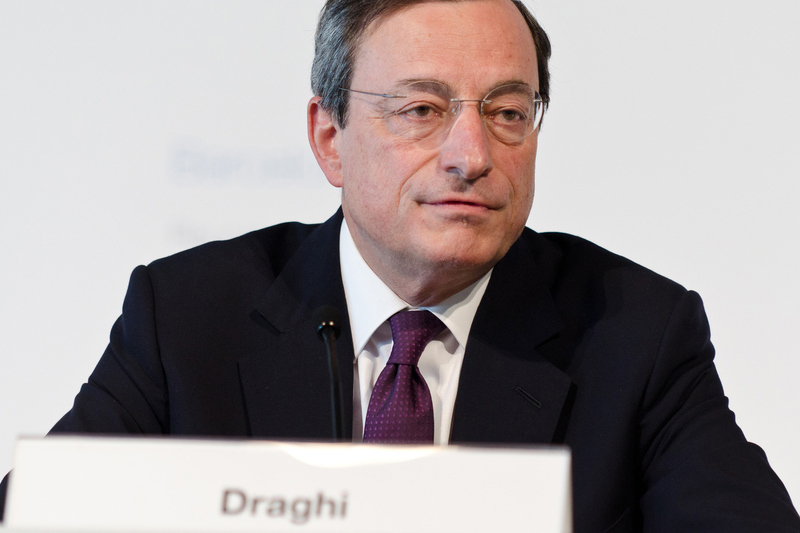(Bloomberg) -- European Central Bank officials are approaching a major decision on new stimulus amid conflicting economic data and differences over what to do about it.
Economists at the ECB are preparing forecasts for President Mario Draghi to unveil next week that will show whether they still believe an upturn will materialize in the second half of the year. The Governing Council must then decide if it should yet again deploy any of its many tools -- including a new round of bank loans -- to boost growth and inflation.
Some policy makers were already losing confidence in the outlook at their decision in April, according to an account of the meeting published last week. Data since that meeting have been inconclusive, with an apparent disconnect between surveys and market indicators that show worsening sentiment, and hard numbers such as gross domestic product and household consumption that suggest resilience.
“The overall picture is still one of below-trend growth,” said Aline Schuiling, senior economist at ABN Amro Holding NV in Amsterdam. “The big question is what will the ECB do. The minutes showed that they are struggling with the inflation expectations, which are quite low.”
Those inflation expectations, a measure of whether investors are confident the ECB will meet its mandate of restoring price stability, are a critical part of the puzzle. While both headline and core inflation topped estimates in April and underlying gains were later revised even higher, expectations have continued to plunge.
Germany is also something of an enigma. Beset by trade tensions that threaten exports and domestic troubles at its car factories, the euro zone’s biggest economy is anything but a powerhouse at the moment. Yet the moribund mood among companies -- confidence is the weakest since 2014 -- might be overstated. Household consumption in the first quarter jumped by the most in almost eight years and exports were surprisingly robust.
In both Germany and the euro zone as a whole, much depends on whether a downturn in manufacturing bleeds into the service economy. Purchasing managers indexes have shown a divergence between the two but unemployment is still declining, putting money in people’s pockets. At the same, PMIs last week showed an unexpected drop in services activity.
Policy makers will get the latest economic confidence data this week, and inflation and unemployment in the final days before their June 6 meeting.
Part of that meeting will focus on pricing for a new round of long-term loans to banks that starts in September. Some policy makers want to give generous terms as a way to add stimulus, while others want to keep the tool more restrictive to gently wean lenders off central-bank support.
Bigger tools would be to restart quantitative easing -- just six months after the ECB stopped it -- or somehow reduce interest rates despite the deposit rate being at a record-low minus 0.4%. Money markets are increasingly pricing in the chance of another cut by early next year.
That consideration would revive talk of potentially tiering -- exempting some bank deposits from the subzero rate -- to prevent a squeeze on bank profitability that could make them pare back lending. While Draghi has pledged to review mitigating measures, Governing Council members have so far been unenthusiastic.
Alternatively, the ECB could pledge to keep interest rates low for longer, a move that would tie the hands of Draghi’s successor even more than he already has. The ECB currently says rates will stay at record lows at least until the end of the year. Draghi’s term ends in October.
“Our current base case is for a further extension,” said Schuiling. “The overall picture is not very rosy yet.”
